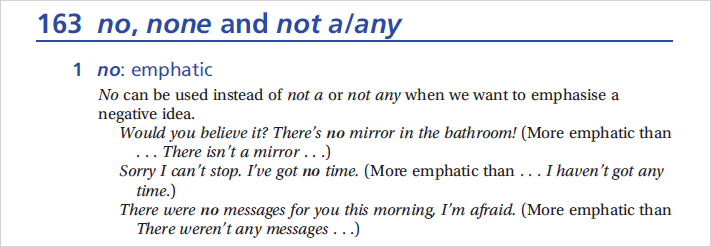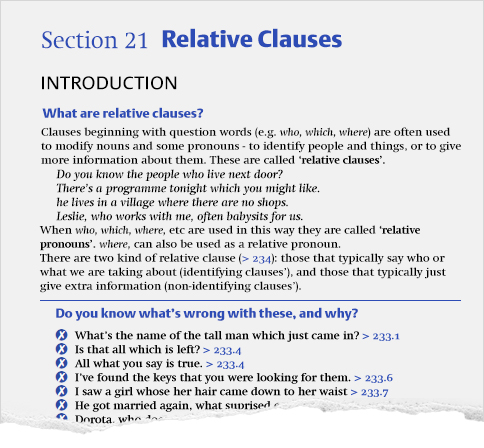 Michael Swan, author of Practical English Usage, joins us on the blog today to review his IATEFL talk this year all about the new, fourth edition of PEU and its new features and organisation. If you were unable to attend this year’s conference, we hope you enjoy this post!
Michael Swan, author of Practical English Usage, joins us on the blog today to review his IATEFL talk this year all about the new, fourth edition of PEU and its new features and organisation. If you were unable to attend this year’s conference, we hope you enjoy this post!
The history
PEU started as a card index with explanations and examples of typical problem points, based on my experience of students’ difficulties. I created this primarily for new teachers at the school where I worked, who often had trouble dealing with their students’ mistakes and questions, They found (as teachers still do) that systematic grammars are not always the best kind of reference material for clear and adequate explanations of single problems. The ‘one answer to one question’ formula which (up to a point) characterises usage guides is much more user-friendly.
Later I turned the card index, greatly expanded, into a book, which was published by Oxford University Press in 1980. Teachers and advanced students found it helpful, and a second edition followed in due course. This benefited considerably from feedback from users, from advice from British and American grammarians, and from my own continuing research.
By 2005 there had been enough developments in English to justify a third edition. The existence of better and more accessible corpus evidence for usage made possible a number of improvements, and I took the opportunity to add some more general ‘background’ entries on such matters as correctness and language variation.
Why a fourth edition?
English continues to develop and change, and a usage guide needs to keep pace. I had also built up a fair number of revision notes over the intervening ten years, and I was glad of the opportunity to make further clarifications, additions and corrections. (Nobody ever gets everything right the first time, or the second, or the third!) After consultation with users of the previous editions, I also decided it was time to make an important change in the book’s organisation.
Reorganisation
In the first three editions, the 600-odd numbered entries were arranged in alphabetical order of title. This dictionary-like formula works well in a native-speaker usage guide, which deal mostly with word problems. It is less satisfactory in a guide dealing with learners’ problems, since these are largely grammatical. Related topics get separated, so that while ‘countable and uncountable nouns’, for example, are listed under C, other noun problems are found under N. More seriously, only the major topics can be found by an alphabetical search; smaller topics (the majority) come inside entries that don’t begin with ‘their’ letter. (So, for instance, the use of singular and plural verbs with decimals and fractions, or the British-American difference in the meaning of ‘first floor’, are covered in the entry on ‘numbers’, not under D or F.) This means that in practice people using the book generally locate the information they need by going to the very complete index at the back.
In the fourth edition, the entries are still separate, dealing as far as possible with single problems or small groups of problems.

However, the entries are now arranged by topic. The grammatical entries have been brought together into 28 main Sections, which together constitute a complete students’ grammar:

Each Section is introduced by general notes on the topic and a list of typical learners’ problems:

Word-formation and vocabulary are dealt with separately in three more Sections, including an A–Z list of nearly 380 word problems:

Now online
Practical English Usage is now also available online, along with the new edition of the accompanying Diagnostic Tests, which help learners and their teachers to see which parts of PEU need to be studied.


It’s been a great book! Stefania
Inviato da smartphone Samsung Galaxy.
Great article!
[…] ???Oxford University Press??????Practical English Usage??????Michael Swan?????? […]
Reblogged this on ELT by M Amin Gental.
I have experience in using Paractical English Usage contents with my students in undergraduate and postgraduate courses. I would like to have at least a digital version of the book. My deepest respect and congratulation to the author Michael Swan, but special acknowledgement to this website that has facilitated our communication and learning.
Hi,
what is the difference between the ‘Fourth Edition’ and the ‘International Edition’?
Thanks.
Hi Gerrit, The Fourth Edition is the standard edition that comes either with or without online access. The International Edition is designed for and is only available in a small number of countries, and does not include online access.
Alex
OUP
But has book any differences?
Hi, I would like to know if there is an edition just for Teacher’s Use – ie Teacher’s Edition? ISBN number, please. Tks.
Hi Cynthia, there is no edition specifically just for teachers. This edition is designed for both teachers and advanced level students -> https://oxelt.gl/2FC5H0r
ISBN: 9780194202435
Hope this helps! ^Alex
[…] 1) While a good grammar book is a must-have, Practical English Usage by Michael Swan is much more than that. It gives answers to commonly asked questions about grammar in use with brief but useful explanations with good examples. See here for an interview with the author […]